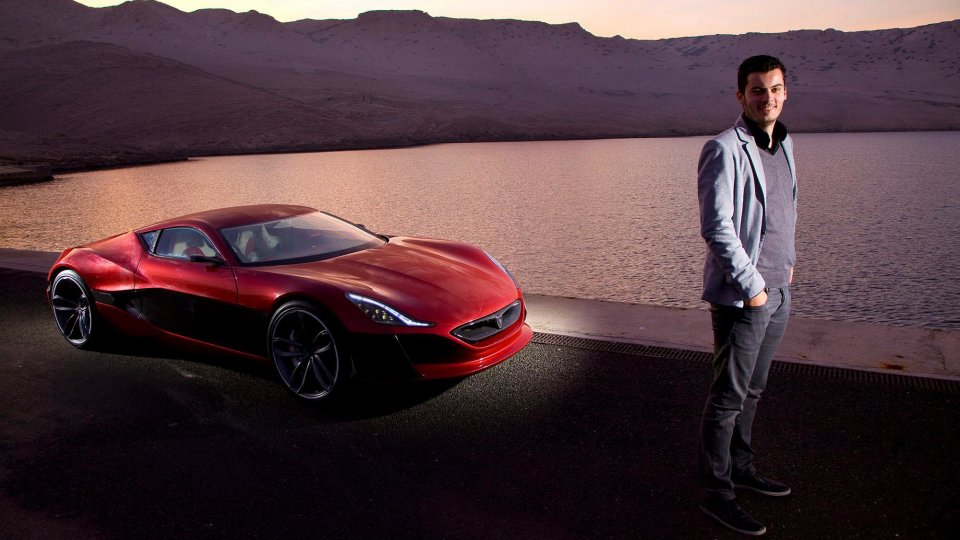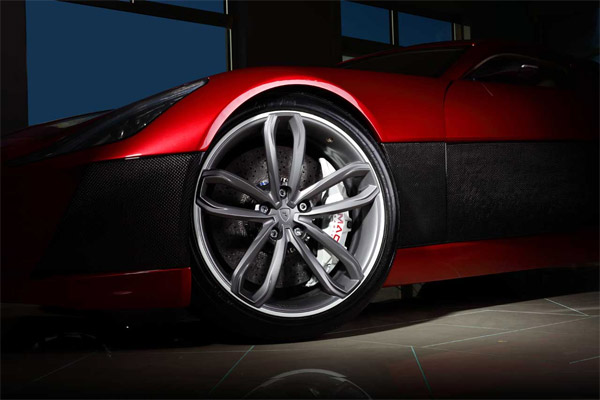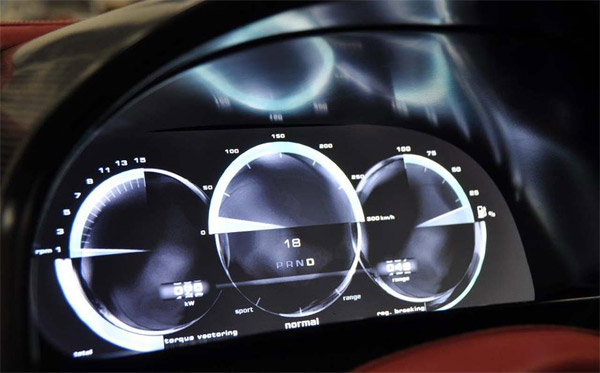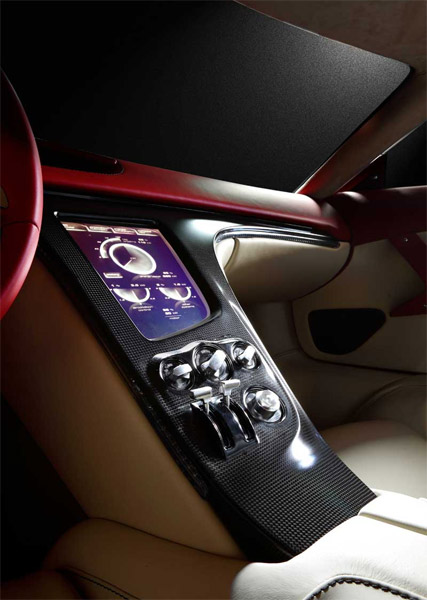
Masihkah berfikir Indonesia tidak mungkin untuk menciptakan supercar listrik?
Mungkin Mate Rimac bisa menjadi inspirasi untuk kita semua
Pemuda jenius yang saat ini berusia 24 tahun sudah berhasil mendirikan brand Otomotif "Rimac Automobili" dan menghasilkan Rimac One concept. Rimac One Concept adalah supercar listrik bertenaga 1.088 Hp yang mampu mengalahkan Bugatti Veyron dan mampu menempuh jarak 600 km dalam sekali pengecasan.
Kok bisa? Gua juga bingung, apalagi negaranya adalah Croatia (Kroasia) yang konon katanya penduduknya sangat dikit.
Faktanya mengejutkannya lagi:
- Belum ada sejarahnya industri otomotif di Croatia
- Tidak ada pabrikan mobil dari Croatia
- Tidak ada pabrik penyuplai komponen mobil di Croatia
- Tidak ada lembaga riset khusus mobil listrik di Croatia
Sedangkan di Indonesia kurang lebih sama kaya disana, jadi masih ada harapan sebenarnya
langsung aja ke artikelnya :
http://www.whiteboardmag.com/rimac-1-mi ... s-croatia/Building electrical, 1 million $ supercars in Croatia is impossible. Can’t be done, in a country with no car industry to speak of. That’s what the department of Engineering at the University of Zagreb told Mate Rimac, at least. It didn’t stop Mate from trying. And when financing from the Abu Dhabi royal family fell through, he decided to bootstrap it, for good measure. Buckle up for a story about fast and furious entrepreneurship:
Mate Rimac: When I was in high school, I studied mechatronicsa at a technical school. For our final exam, we had to make something, a real product. Most people chose an amplifier, but I had the idea of creating a glove which could replace your keyboard and mouse. My professor said: that’s cool, we should take this to an inventor’s exhibition. So we did that, although I didn’t really want to develop a product at that time. It was just a school project, you know? But then I started to win prizes with it, and it became a bit more serious.”
Mate ended up making several prototypes, but the glove never made it into production. “I was too young and inexperienced, I guess. I had no one to point me in the right direction. But while visiting all these exhibitions with my prototypes, I came up with the idea of an active mirror system that eliminates blind spots for drivers. I made a prototype, and with that I again went on the exhibition circuit. And this time I did get some interest from German and French car suppliers, so I partially commercialised this – even before I was eighteen. I can’t tell you who the other parties were, I’m afraid, because that’s how things are in the car industry. Everything is secret (laughs). It’s strange, but that’s the industry.
From there going to building supercars is still a bit of a leap, wouldn’t you say?
Mate Rimac: “Yeah, I guess it is. My big passion has always been cars, as long as I can remember. Like most boys I guess. Cars and electronics. With the first money I made by selling my invention to the industry, I bought a used BMW to race. Unfortunately, I blew up the gas engine one time. And then I thought: I bet I can make my car faster if I just replace the combustion engine with an electrical engine. It was a way to combine my two passions: cars and electronics.”
“I bought the parts and components off the shelf, but I soon saw that they weren’t very useful for what I was trying to do. My car just wasn’t any good. So I assembled a team to make a better electrical engine and drivetrain. Until then, I was just a guy in a garage, but at that point I really started a company. My seed money was the money I had from the commercialisation of one of my patents.”
Mate’s first attempts at racing his electrified BMW weren’t a great success, he says. “People would see me with my car and they would make jokes. It looks like an electric wheelchair. Or: does it also charge my iPhone? They couldn’t believe that it was possible to race an electric car against combustion engines. And in the beginning I did lose races, but after each race, I went back into the garage to make my engine a bit better. And while still in my garage stage, I actually started to win races.”
“I won a race against all the fastest cars in southeast Europe – all the supercars from Slovenia, Bosnia, Croatia were there. I beat 1200 HP cars with my electric BMW. People started to come to the races just to see a completely silent car win against overpowered supercars that were spitting flames (laughs). Which is a strange sight, I have to say.”
Watch Mate Rimacs BMW beat a Tesla in a drag race:
http://www.youtube.com/watch?v=YzBK1Mk4ias
Ugly duckling gets a phone call from Abu Dhabi royal family
It was inevitable that the media would pick up such an ugly duckling story, and sure enough it did. With the media attention also came an offer from Abu Dhabi, says Mate.
Mate Rimac: “There was a guy who works for the Royal Family of Abu Dhabi. His job was to find interesting projects that the Royal Family can invest in. He asked me if I had anything to show to potential investors – which I hadn’t at the time. I spent day and night working frantically on a brochure for the first of the electrical supercars: the Concept One. I also put in some computer renderings of how the car would look. He called back two days later: we want two (laughs). And I told him: okay, I can probably deliver them in ten years or something, because I have no money to develop the cars. A few days later, he called again: “How much do you need?”
If this reads like it’s too good to be true, it’s because it is. In the end, not a single Abu Dhabi eurocent ever found its way to Mate Rimac’s studio in Zagreb. “It’s a long story,” he says. “We were 100 percent sure that we would get that money. There was a term sheet and everything, but after two years we didn’t agree on the terms. For one thing, they wanted to move the whole company to the desert in Abu Dhabi, and I just couldn’t do that: I have 20 people working for me. They have family and friends here, you know? You can’t just move all that.”
“But while we were still negotiating, my father said: let’s not waste any time, and book a stand at the Frankfurt motor show. You have to book those stands at least a year in advance. So we did that, with our own money. And we also started working on the car, with our own money.”
“Because we were 100 percent certain that we’d get the money in the end, you know? We poured everything into it. My father is a real estate developer who builds shopping centres. We’re not billionaires by a stretch, but we put everything we had in it. My cars, my flat, I sold everything to keep the company going.”
“I can’t tell you how many times I’ve been on the verge of a nervous breakdown because I have to make payroll and we had no money left. But just when things started to look very dire, we started to get contracts to develop powertrains and battery packs for other car makers. Relief in the last second.”
All this resulted in Rimac Automobiles still being 100 percent owned by Mate Rimac and his family. It’s a blessing and a curse, he says. “You’re your own boss, but I do have 20 people who want to get paid each month on the first. I’m quite proud that we were never late paying salaries. In Croatia it’s quite common that even large companies are a few days late paying. That never happened to us.”
Building a global automotive startup
Was it an advantage to have a father who is an entrepreneur?
Mate Rimac: “I don’t know. The businesses are completely unrelated. And he’s more the old generation of entrepreneurship, you know? In Croatia, doing business is about meeting, talking, building personal relationships. I’m a small company, but we operate globally. I never did a single euro of business in Croatia, it’s 100 percent export to other corners of Europe or even the world.”
“When I started the company, my father actually said: don’t be crazy – don’t do it. You’ll have to work day and night and it will be very hard. I knew he was right, but I decided to do it anyway.”
You started with a dream to build supercars. But as other business came in, were you never tempted to give up on that dream and just become profitable?
Mate Rimac: “It’s tempting (laughs). The company could be profitable, and people tell me I should pivot to becoming an engineering company. But I don’t listen to that anymore. We invest everything in the production car – not the Concept One, a real production car that we’re releasing next year.”
“It’s not easy to start a car company. The automotive industry is very, very hard to break into. You have to spend a lot of money on development, crash tests, homologation. It’s even harder because we don’t have any car industry in Croatia. The department of Mechanical Engineering here at the university of Zagreb told me: what you’re trying is impossible. I simply decided: I won’t talk to anyone about what I’m doing, and I’ll present it when I’m finished. Which is exactly what I did with the Concept One. And we’ll do it again with our production car, next year.”
“My goal is really to be a car manufacturer. Not an engineering company. And my goal isn’t to make a lot of money: my goal is to make the fastest and best electrical supercars in the world. I won’t stop until I get there.”
Can you give me an idea of your turnover?
Mate Rimac: “Our turnover this year will be about 600 000 euros. It could go up to 2 million, depending on a few projects we’re negotiating. Next year, I want to get to 10 million euros in revenue.”
Last week I wrote about the Croatian Elon Musk of the deep sea, but you actually ARE the Elon Musk of Croatia.
Mate Rimac: “With the difference that people in Croatia don’t know me. I try to keep out of the media as much as possible. The climate here is not favorable to entrepreneurs. Before the war (in the early nineties, ed.) Croatia had a communist regime, all the companies were state owned. After the war, all those companies were given away for free to friends of the government. In Croatia, the word ‘entrepreneur’ equals ‘criminal’. Even guys like me, who are bringing jobs to the country, get stigmatised. So I don’t want any exposure in the press. I get a lot of media requests, but I don’t give interviews to the local media.”
You sound very mature for your 24 years.
Mate Rimac: “It’s just been very tough the last years, I guess. I think I had to grow up fast, otherwise Rimac Automobiles would have drowned. ”
1 million $ supercars
What are your plans for the business. Are you looking for money, or do you enjoy bootstrapped life?
Mate Rimac: “I like being bootstrapped. There’s no pressure, I can do what I want. Investors are always looking for high returns, and I don’t like talking about that. I’m in negotiations all the time, but I hate talking about those numbers – hundreds of millions (laughs). So we’re looking for partners, but they have to fit in. They don’t just have to bring in money, and they can’t expect to have a big control in the company.”
“And if we don’t find the right partner, we’ll do it alone. We’re doing quite fine, only not as fast as I’d like to. I’m always afraid that someone will overtake us. At this moment, we have the best supercar, we’re the furthest advanced with our tech, but someone with a lot of money can overtake us. That’s what I worry about.”
It’s not Tesla Motors that he worries about, he stresses. Rimac is often compared to Tesla motors, Mate explains, although they’re two very different beasts.
Mate Rimac: “Tesla always says that they have a “small budget” compared to other car makers. But Tesla received 450 million dollars in government funding and another 1 billion dollars from private partners. I realise that they’re American, so it’s a different scale. But you can’t begin to imagine the difference in budget that we’re using at Rimac. I would rather not say what our budget is, because I’m afraid people won’t take us seriously if I do. We’re a luxury car maker, and I don’t want people to think it’s not engineered well – it is, it’s top notch. But I can say that other car makers probably spend on designing their buttons what we spent on the whole car.”
“The second difference is that Tesla wants to become the next BMW or Mercedes. They want to sell 30 000 cars next year. We want to sell 15 of our cars, at a price of about 1 million dollars. We are selling supercars, more like the Bugatti Veyron than a BMW 7. One of our customers who just ordered a car already has 250 cars. That’s the segment we’re targeting: people who probably already have a Bugatti Veyron, a Ferrari and a few Porsches. People who want something really special. ”
He actually likes Tesla a lot, he says. “I don’t like most electrical cars. I do like Tesla. Their tech, their approach. They do a good job on every level. And if I had any spare money, I would buy a model S as my everyday car (laughs). They’re the only mainstream electrical car company that will survive, I think. Most of them have already gone under. I actually think their success will be good for us, and our success will be good for them: we’re both showing the world that electrical cars are not necessarily ugly boxes with a limited range, but [cencored], cool, fast cars. I’m a fan of Musk. I never met Elon Musk, but I might see him this week in London, and I really hope I can talk to him a bit.”
Bugatti Veyron
The real competition for Rimac are supercars like the Bugatti Veyron. “We wanted to make the fastest electrical car in the world, with 4 motors, one for each wheel separately, 1000 of horsepower and a range of 600 kilometer. Those were our benchmarks, and we hit those numbers. The production car will pack 1088 of horsepower – compared to 1001 for the Bugatti.”
How Rimac managed this? By working towards those very clearly defined goals, and by starting from scratch – and with a team that didn’t have any automotive experience. “Our designer worked at GM and Magna, but he’s the only one. The others are from very different backgrounds, simply because we have no car industry in Croatia to recruit from. One of our guys used to design drones for the military. Having no experience gave us an advantage, because we tackle things from a different angle. Although occasionally you pay for this lack of experience, of course.”
“When we started, we didn’t necessarily want to start from scratch, but when we bought components, we quickly saw that they wouldn’t do what we wanted them to do. So we designed literally everything: battery packs, powertrain, motors, chassis. That gave us the advantage that we didn’t have to deal with limitations. The Tesla roadster is built on the chassis of a Lotus. That’s very limiting. The fact that we have four engines – one for each wheel, is the biggest difference with other cars. But the rest is details: every single detail in our car is just a little different from other cars.”
“Of course, it helps that we build a luxury car. If we can extend our range 5 kilometers by using batteries that are 20 percent more expensive, we can absorb that. Most car makers can’t, which means they’re selling EV’s at a loss.”
“Nobody does any real stuff anymore. Just 1′s and 0′s”
What he’s doing is so – wild, I say. He laughs. “One year ago, I didn’t know anything about the startup scene. A friend took me to some conferences – Pirates, Geeks on a Plane. I was really surprised. All those ideas are about 1′s and 0′s, apps, websites. People are not doing real stuff anymore. I’m sure those businesses are hard, but making a complex product like a drone or a car – that’s something else.”
Keren ya? Kroasia yang begitu aja bisa, masa kita nggak bisa sih? hayo... pak Dahlan mau modalin orang2 kaya Rimac nggak nih?





Ini BMW electricnya si Rimac yang fenomenal itu..... bisa ngalahin tesla


Ayo Indonesia, Kroasia aja bisa, masa Indonesia nggak bisa?




